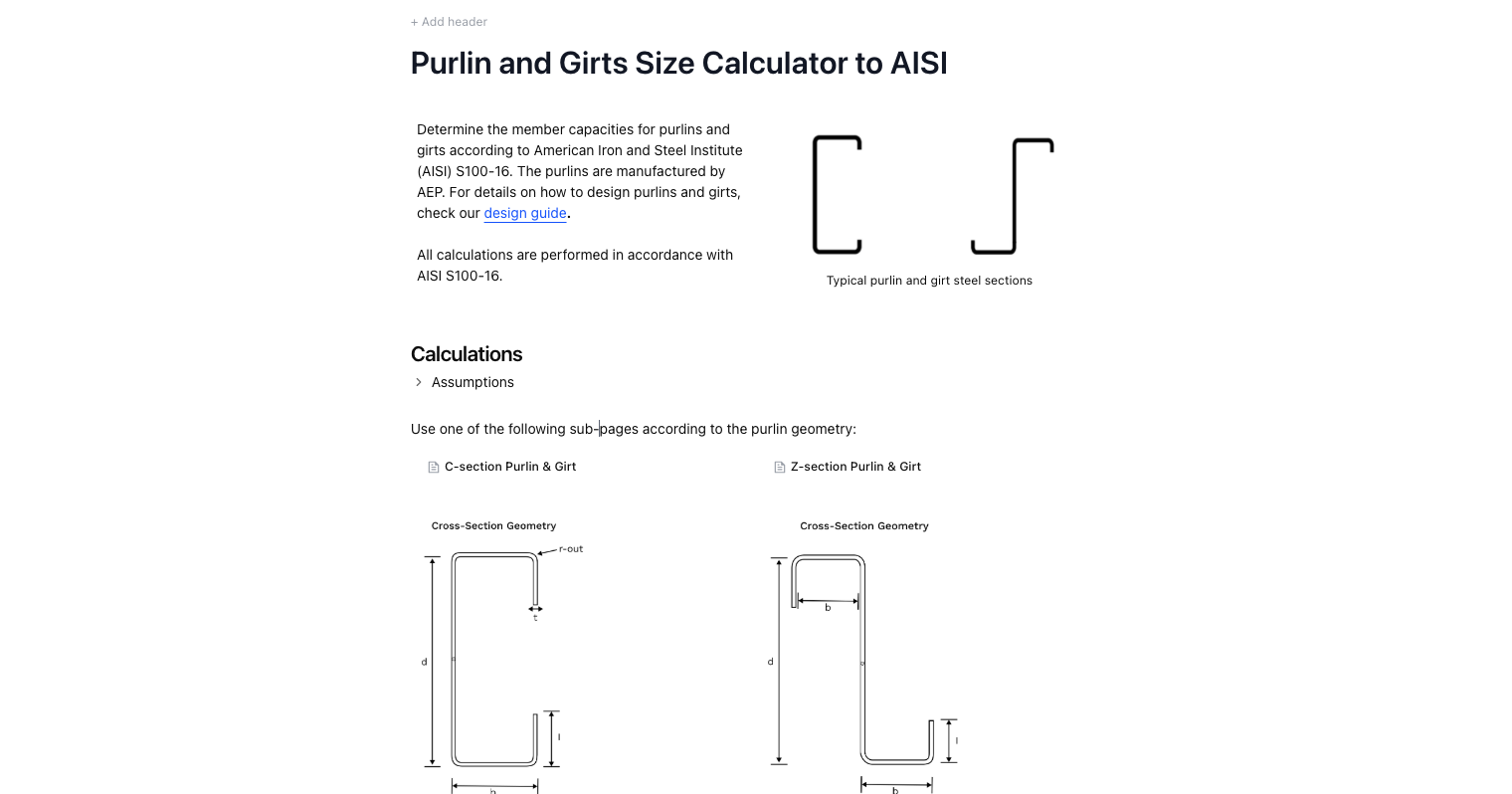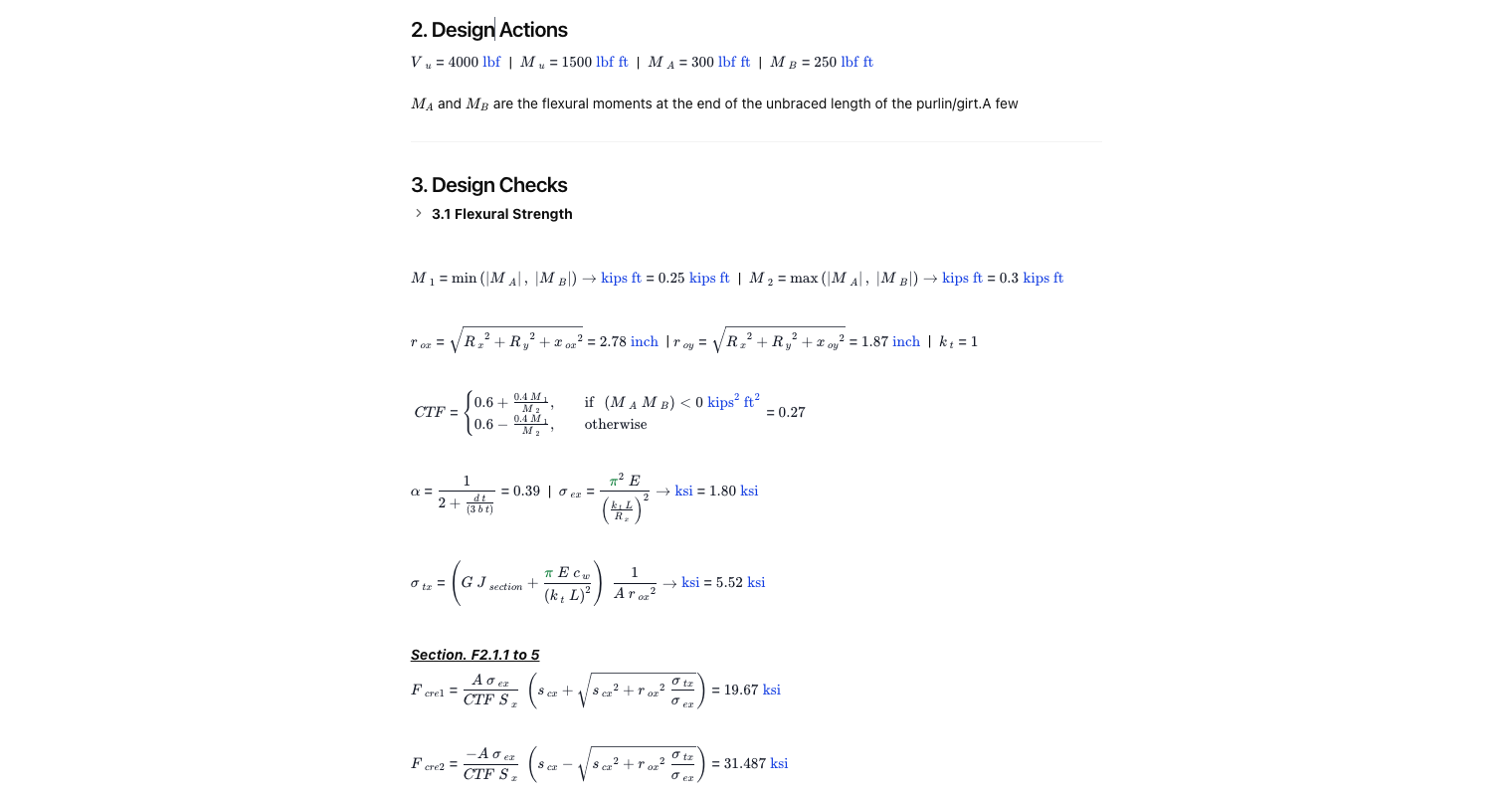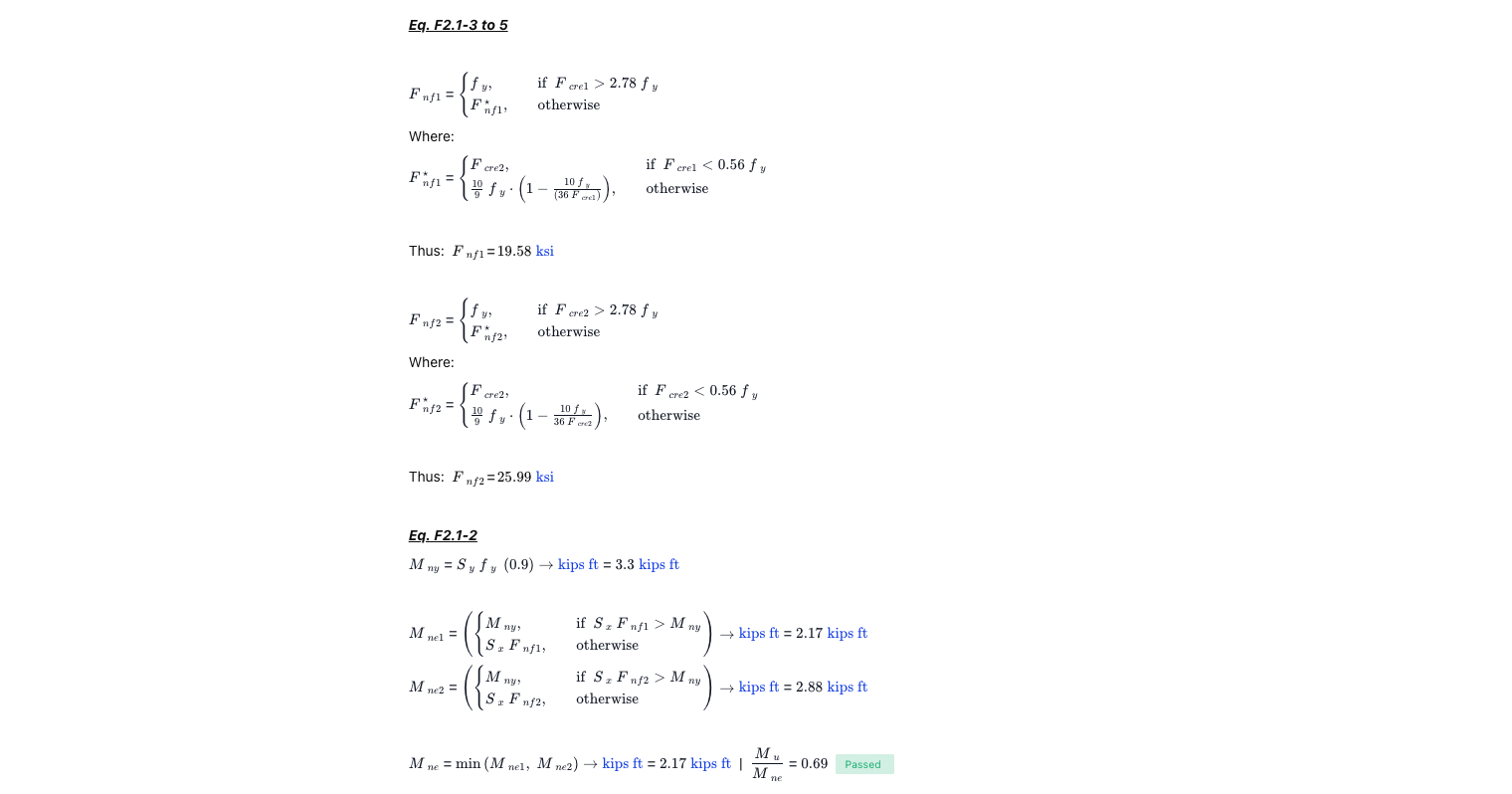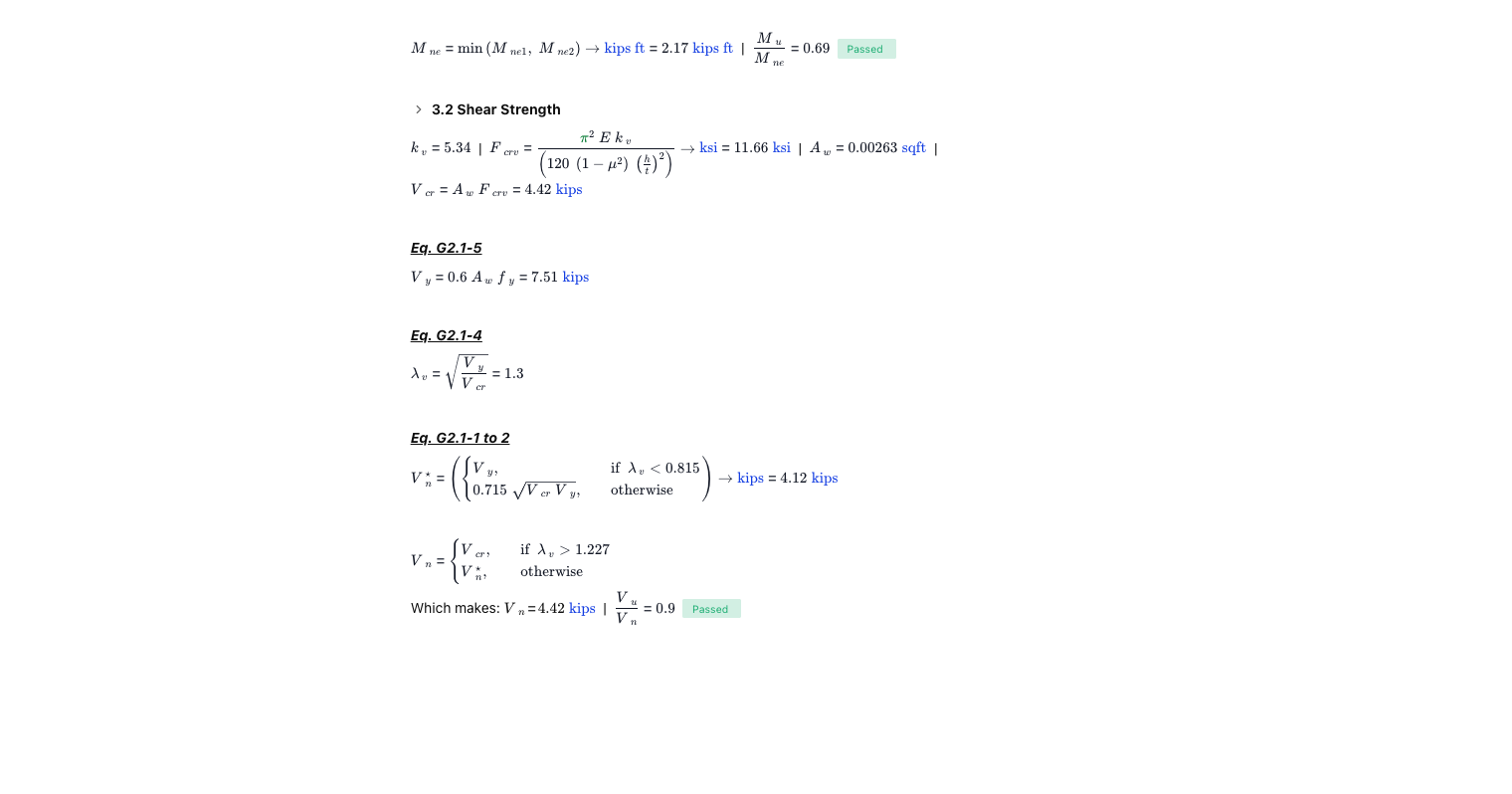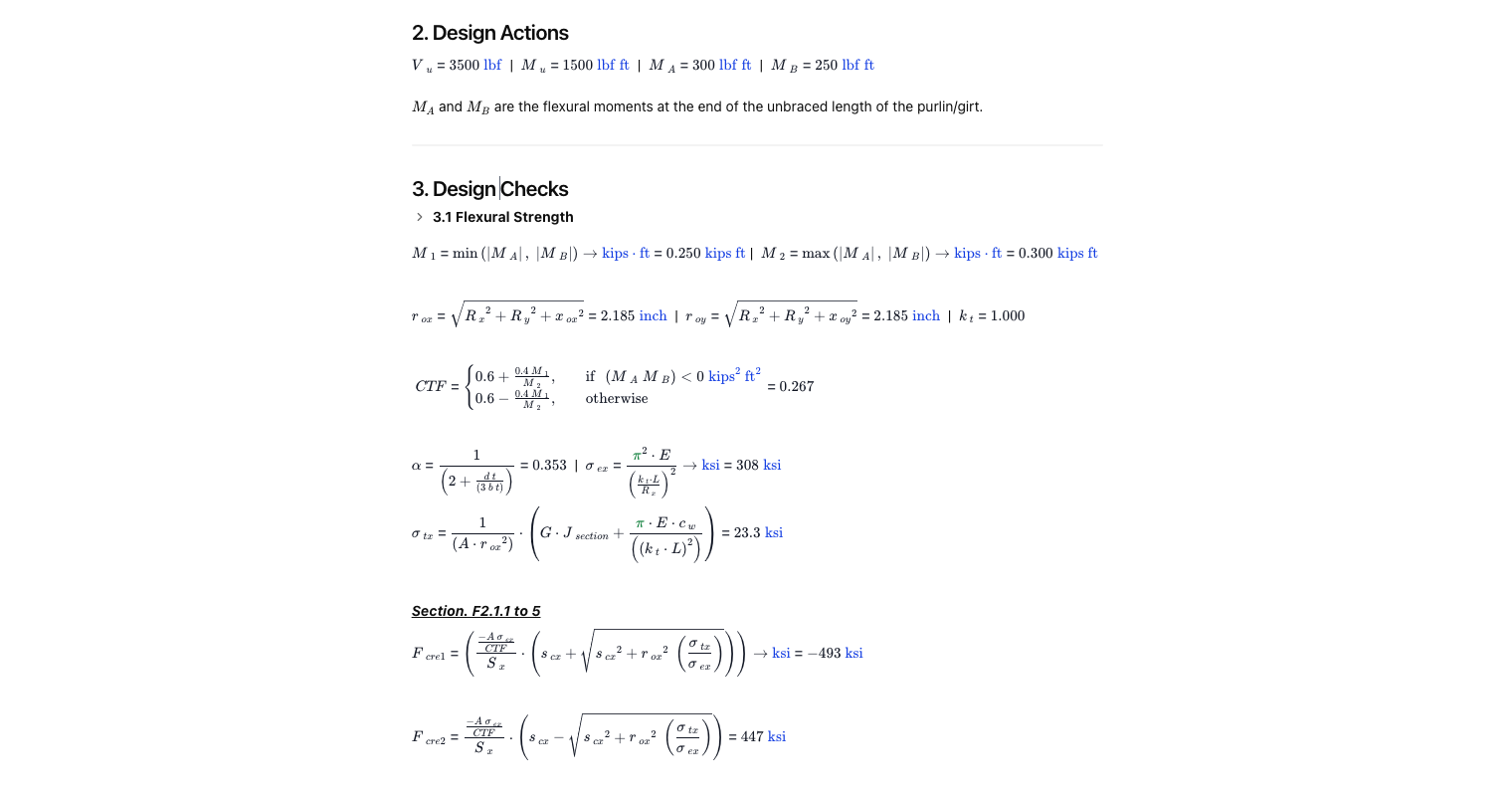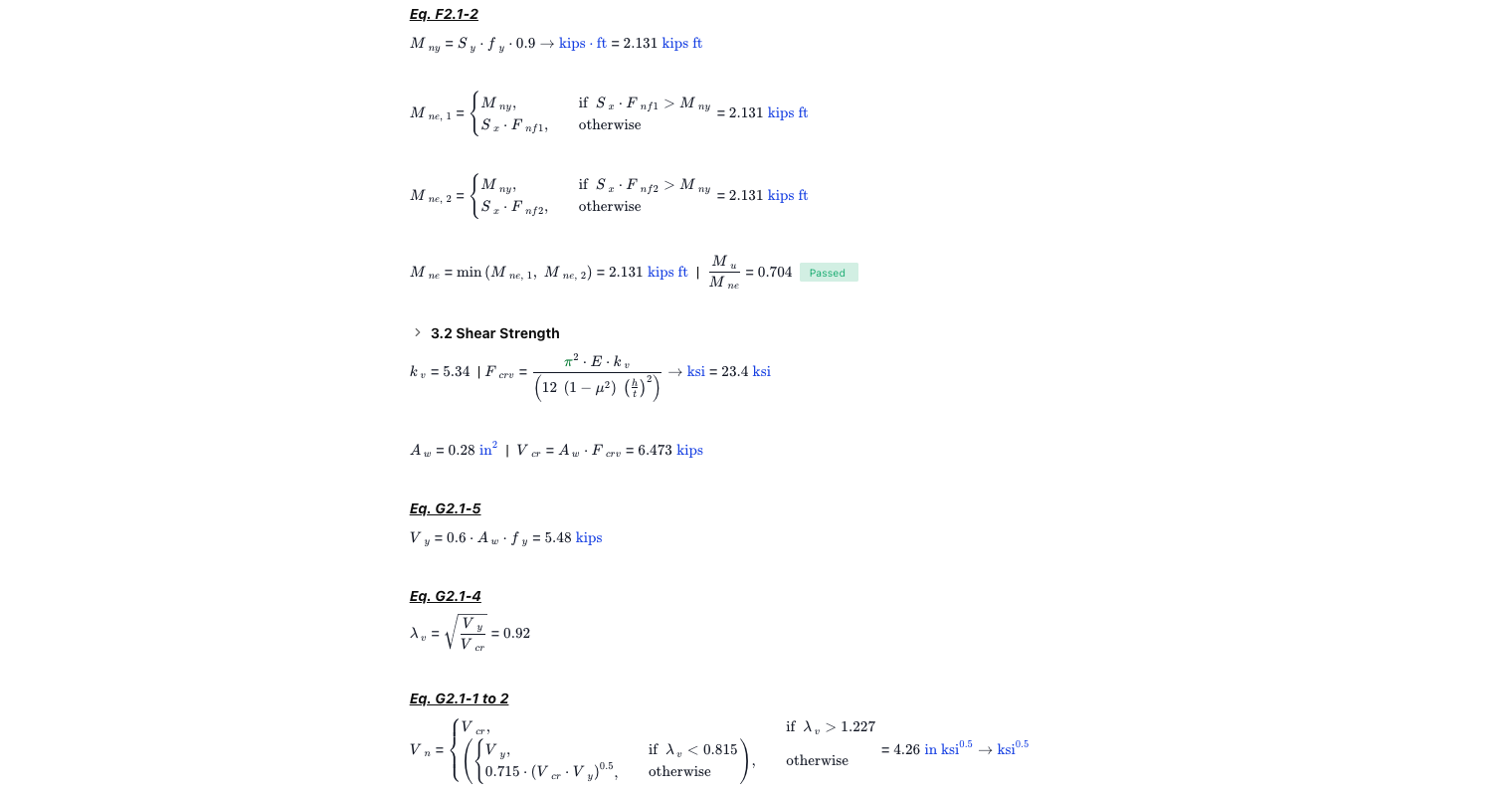Free Steel Purlins and Girts Calculator to AISI S100-16. Step-by-step, engineering-grade tool with downloadable report.

This template is not available yet. You can sign up and create it yourself!
Or let us know if you'd like to be notified when it’s ready:
About this Purlins and Girts Calculator
This calculator evaluates the shear and flexural capacities of purlins and girts under specified loading conditions, helping ensure proper sizing and compliance with load requirements in metal building construction.
It provides accurate calculations for secondary framing components to ensure structural integrity and compliance with building codes.
- Structural engineers: Use this tool to verify purlin and girt specifications and load transfer calculations for metal building projects.
- Building contractors: Apply this calculator to determine proper spacing and sizing requirements during the construction planning phase.
- Metal building designers: Utilize these calculations to optimize secondary framing design and material selection.
The calculator incorporates industry standards and load factors to provide reliable results for cold-formed steel secondary framing systems. Note that (1) it uses section sizes listed in AEP's catalog, (2) Measurements are in imperial units, and (3) the webs do not include transverse stiffeners.
For more information on this topic, refer to this in-depth design guide: Purlins and Girts for Structural Support in Buildings.
General info on Purlin and Girt Calculations
Purlins in Roof Systems
Purlins span across roof trusses or beams, running perpendicular to the slope. They carry roof loads, such as wind uplift, snow, and the weight of the roof covering, transferring them to primary structural steel members. The shape and spacing of purlins directly affect the performance and material efficiency of the roof.
Girts in Wall Systems
Girts are horizontal beams installed between wall columns, supporting vertical wall panels. Like purlins, they resist wind pressure and dead loads, ensuring stability of the wall system. Proper girt design reduces wall deflection and maintains alignment of the external walls.
Secondary Framing Elements
Purlins, girts, and eave struts make up the secondary framing system. They connect roof and walls, providing intermediate support and distributing loads from sheeting back to the columns and beams. These members are often cold formed steel, selected for their light weight, strength, and corrosion resistance.
Load Transfer and Member Shape
Designing purlins and girts involves assessing loads—dead, live, wind, and snow—and selecting the right shape and section depth. C and Z purlins are most commonly found due to their ease of lapping and spanning capabilities. The geometry directly affects performance and support requirements.
To learn more, see: Purlins and Girts for Structural Support in Buildings.
Common Calculation Errors to Avoid
- Incorrect spacing of purlins and girts can compromise stability under wind uplift or snow loading.
- Failing to check load combinations across all zones of the roof and walls leads to unsafe designs.
- Overlooking eave struts as critical links between walls and roof structure often causes underestimated stress transfer.
- Ignoring corrosion resistance in coastal or industrial environments can severely reduce the lifespan of secondary framing members.
- Using incorrect shape (e.g. C vs Z) for spans or connections may increase deflection or fail to optimize weight and cost.
Engineering templates
Common calculators
Design guides
FAQs
What’s the difference between purlins and girts?
Purlins are used in the roof to transfer loads to beams or trusses. Girts are used in walls, running horizontally between columns to support cladding.
What spacing should I use for purlins and girts in my metal building?
Spacing depends on panel type, design loads, and member capacity. Typical purlin spacing ranges from 4 to 8 feet, while girt spacing varies from 4 to 6 feet based on wall panel specifications and wind load requirements.
Can I use the same shape for purlins and girts?
Often, yes. Both use Z or C sections, though shape selection depends on span, overlap requirements, and support conditions.
What material are purlins and girts typically made from?
They’re usually cold formed steel, chosen for its corrosion resistance, lightweight profile, and high strength-to-weight ratio.
Why are eave struts important?
Eave struts connect the top of the wall panels to the edge of the roof, completing the secondary framing loop. They resist loads from both surfaces and help stabilize the transition.
What are the critical load combinations for purlin and girt design?
Critical combinations typically include dead load plus wind load, and combinations with live loads. Wind uplift conditions often govern purlin design, while wind pressure governs girt design.
Summary and References
Purlins and girts are essential secondary framing components in metal buildings, providing efficient support for roof and walls. Their shape, spacing, and material affect load transfer, stability, and overall structure performance.
- Purlins and Girts for Structural Support in Buildings
- Steel Design Rules of Thumb
- American Iron and Steel Institute (AISI) Cold-Formed Steel Design Manual
- International Building Code (IBC) Structural Design Requirements
- Cold-Formed Steel Engineers Institute Technical Resources
- Metal Building Manufacturers Association (MBMA) Design Guidelines
Learn about the benefits of using CalcTree on engineering projects!

